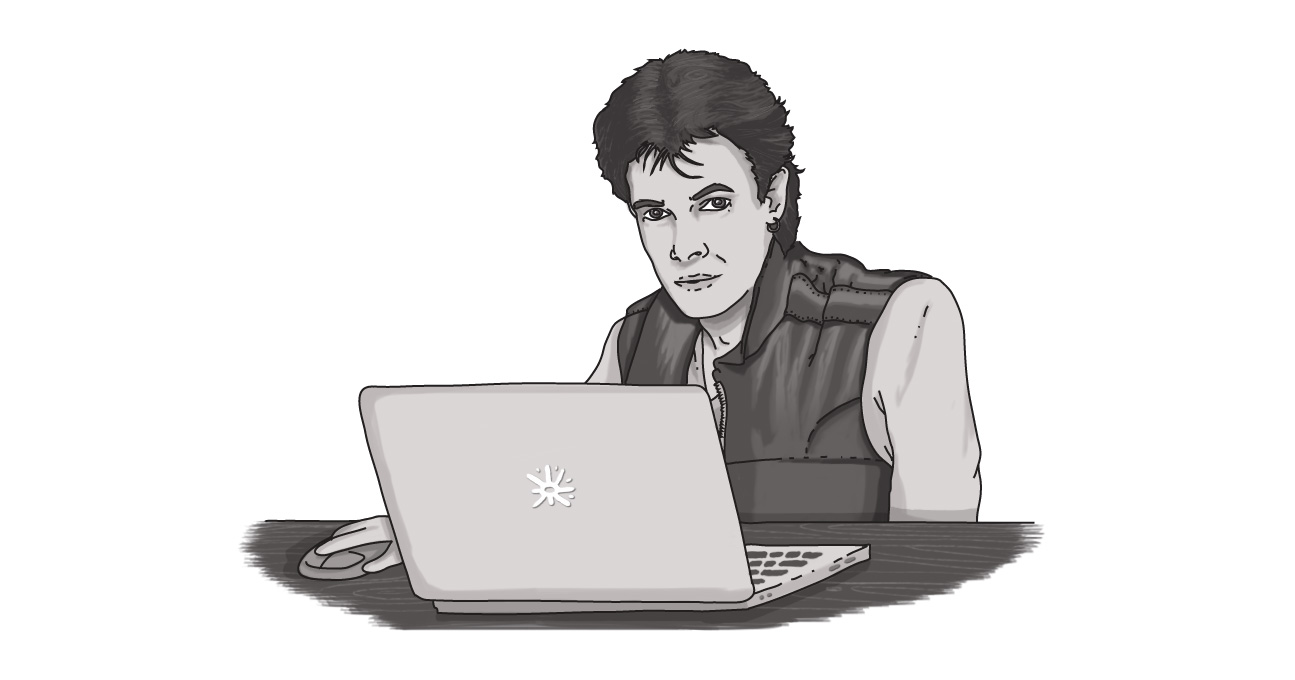How Rick Springfield Predicted the Future of Internet Commerce in the Year 1983

Nostradamus? The Mayans? Carnac the Magnificent? Wiarton Willie? All fine prognosticators in their own right, but all pale in comparison to the most prescient of them all: a musician-turned-daytime-soap-star-turned-rock-star-again.
That man? None other than Richard Lewis Springthorpe – Mr. Rick Springfield himself.
The song in question is Human Touch, a cut from the album Living in Oz. And while it sadly only reached number 18 on the Billboard Hot 100 in the U.S., this power-pop anthem was number one with a bullet when it comes to predicting our conundrum as we balance digital convenience with the needs of our customers.
The self-professed Working Class Dog (and former Dr. Noah Drake) read the tea leaves, saw the signs, and accurately predicted the challenges we face in a world today that is at once more interconnected than ever, but often leaves us lamenting the lack of a Human Touch.
Let’s look at the lyrics and examine what they can mean for your business:
- “Everybody’s talking to computers; they’re all dancing to a drum machine/I know I’m living on the outside; scared of getting caught in between.” – Too many companies lean on their Web site and automated systems to provide all the interaction with their customers. But we all know how frustrated people can get – look no further than computer-generated customer-service menus on phones. We feel trepidation as we anticipate these digital interactions.
- “I’m so cool and calculated; alone in the modern world” – Despite greater interconnectivity through social networking, paradoxically we still feel isolated. We are allegedly a part of a larger community, yet we lack that community feeling.
- “But Sally has a hard time holding back/The alley to her heart is a beaten track” – Despite the fact that we’ve repeatedly been exposed to poor interactive experiences, we can’t avoid these interactions. They’re a fact of our lives.
- “She’s got the love monkey riding on her back” – OK… it’s not a perfect analogy, but something needed to rhyme. And IKEA Monkey was still three decades away.
And then we come to the chorus: “We all need the Human Touch/We all need the Human Touch.” Truer words...
Who else needed it? Rick identified the potential for displacement both within himself and the community around him: “I need it; the Human Touch/We all need the Human Touch.”
And so as to hammer it home that we are all together in this battle, he completed it with, “We all need it! And I need it too.”
Mind. Blown.
There it is. While this song did not get the recognition it so richly deserved when released, looking back almost 30 years later, we see the true genius of this tune – a lamentation for a world yet to arrive; all wrapped up in a lyrical masterpiece.
In the name of efficiency and expediting business, many companies have stopped considering their customers as people, but rather view them as users. For some, the on-line ideal is that they progress through the buying process without ever interacting with another person. It can be efficient, it can be effective – but it can also be cold.
For other companies, success comes from brand advocacy. Understanding the impact of peer-to-peer (and I mean human-to-human in this case) recommendations, many companies have seen the value of engaging with customers on social networks like Facebook and Twitter. And that should extend to your content strategy.
Don’t forget the call to action! And that call to action should be to the Human Touch.
You want your Web site to be informative but not overwhelming – especially if you’re marketing a product or a service. You want to engage your clientele by providing them with the information they need and by giving them the option to interact with you directly.
Few people are going to click on every link on your Web site, so you’ll want to ensure that they receive the most important information in an easily accessible fashion, but can be directed to your customer support channels for more interpersonal – and specific – interaction. Your people are the best part of your company. You want to make it easier for your customers to interact with them.
And this Human Touch extends to how you develop your copy and advertising materials. Write and optimize for what your customers are actually looking for and put their needs and wants at the fore. If you make the experience better for them (and, of course, the best way to do this is to ask them directly), then they’ll be more engaged with your brand.
The companies that can combine the efficiencies and opportunities offered by the “modern world” along with the “Human Touch” that we all truly do need will be the ones that enjoy incredible brand loyalty, advocacy, and – likely – increased sales from a customer base that feels more engaged.
Remember, we all need it. And you need it too.
Who should I target my content to?
To whom should I target my content?
Do customers like automatic systems?
SUBSCRIBE TO OUR E-NEWSLETTER
 Subscribe
Subscribe


